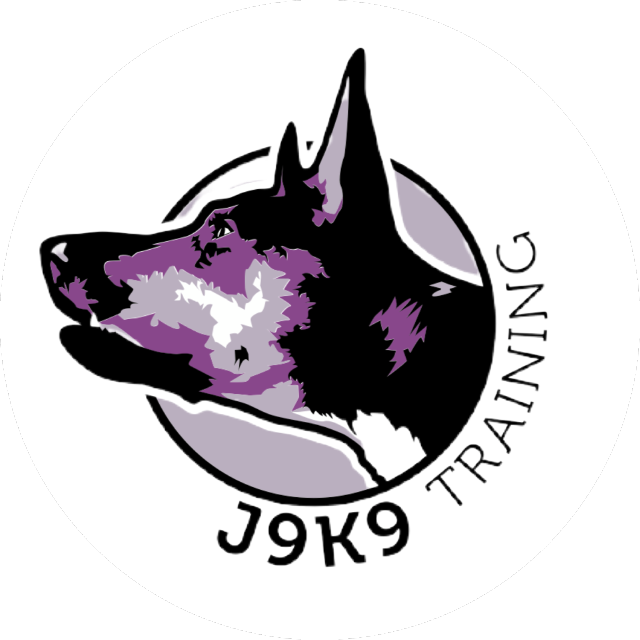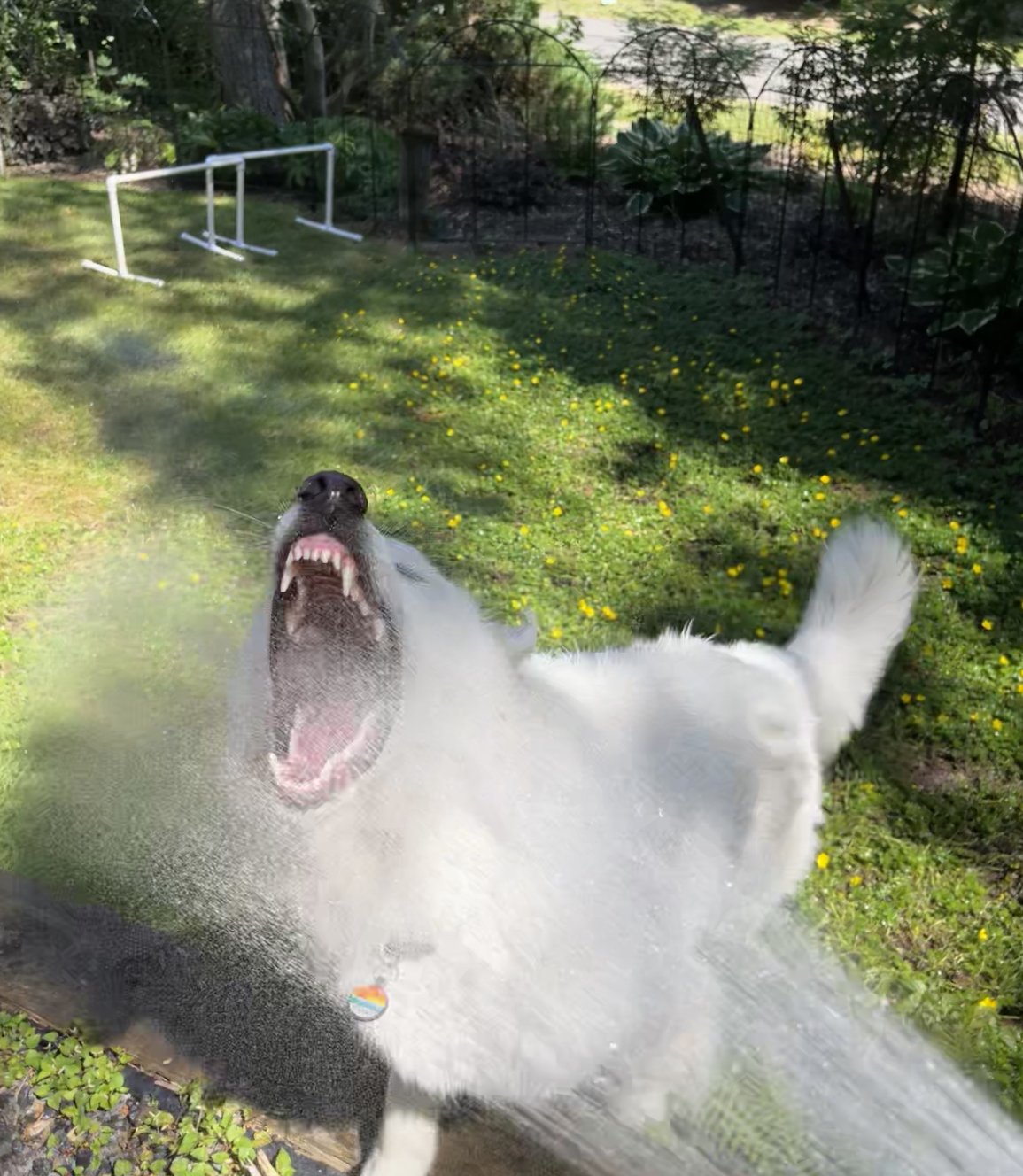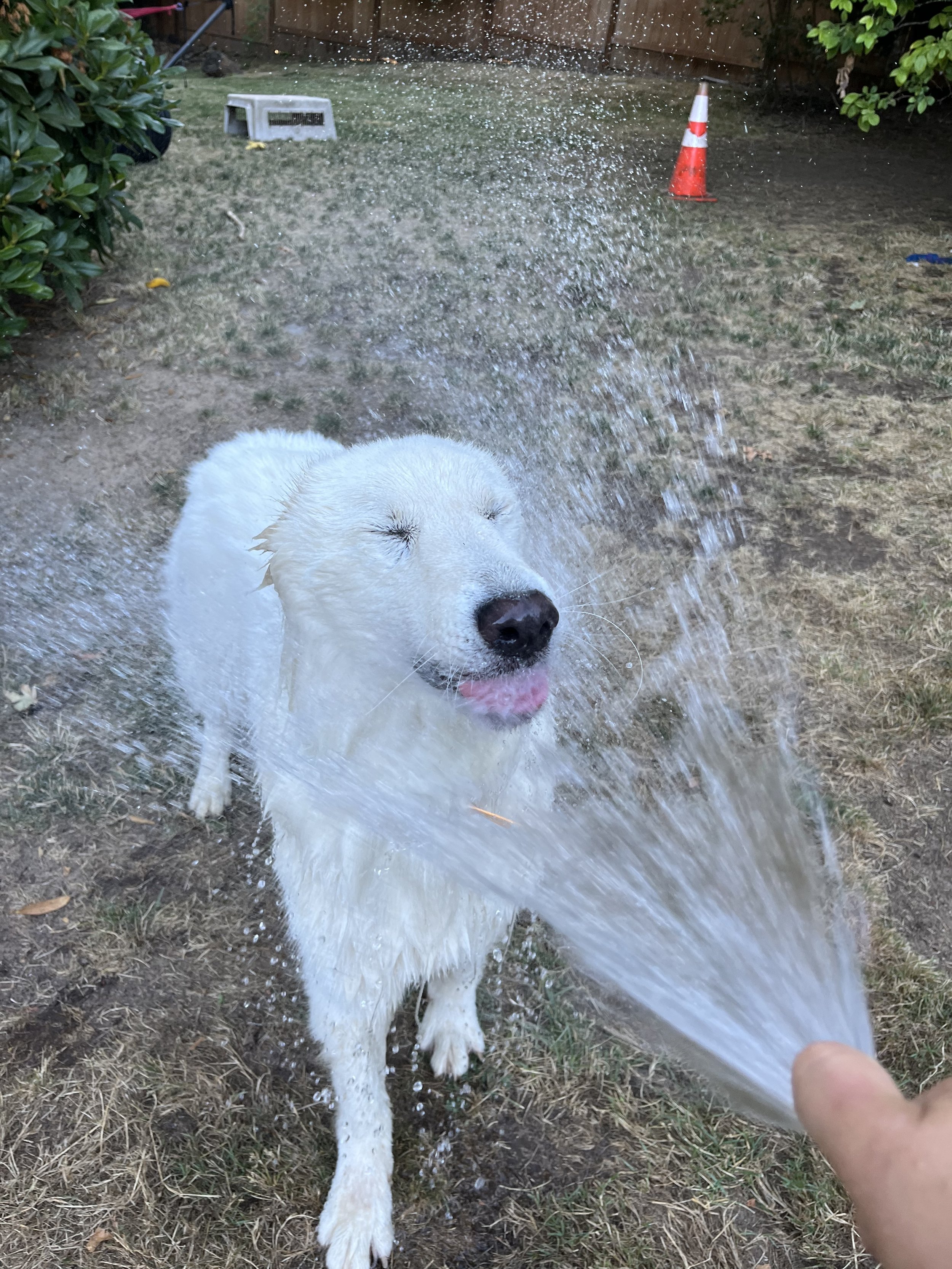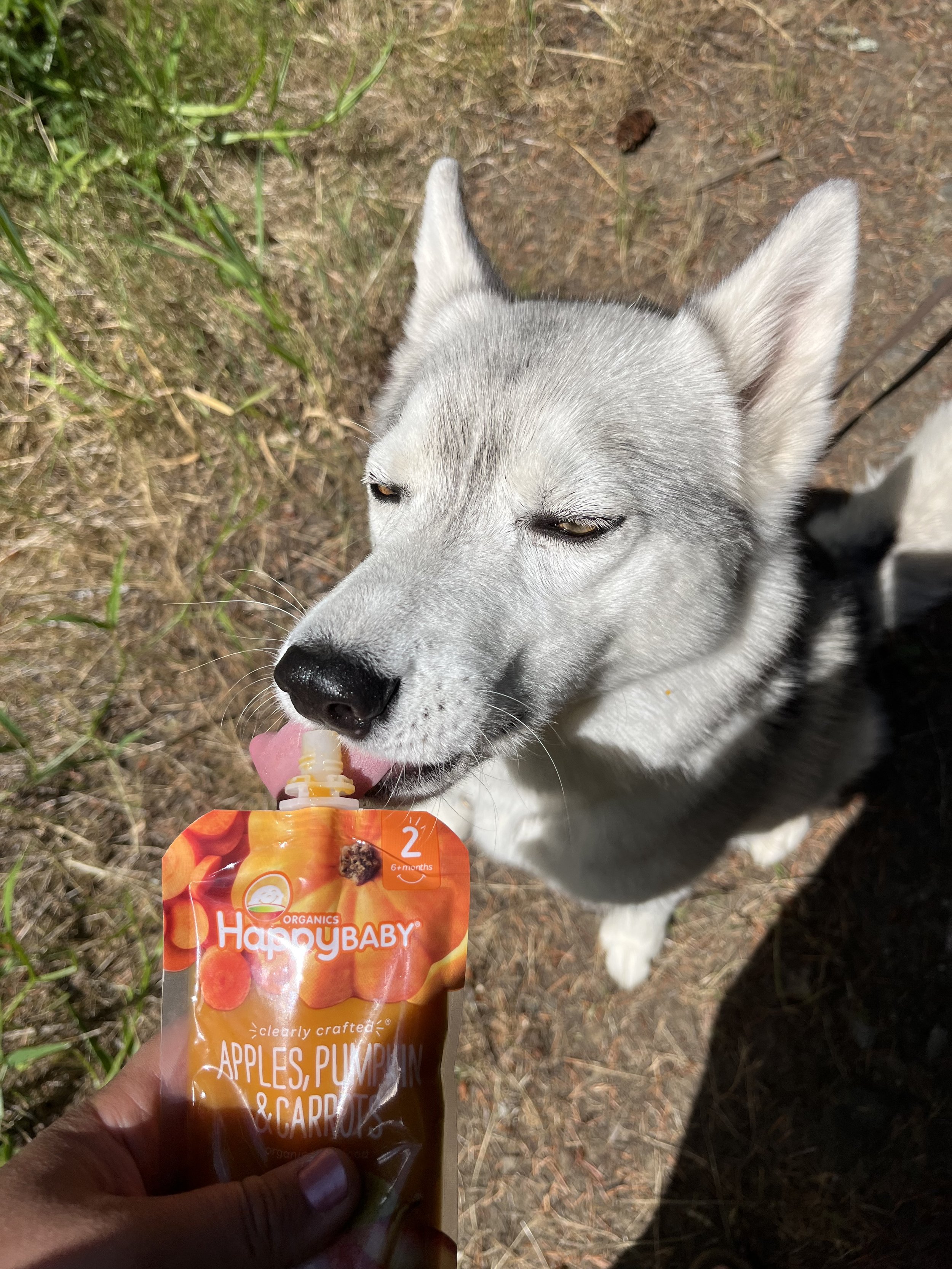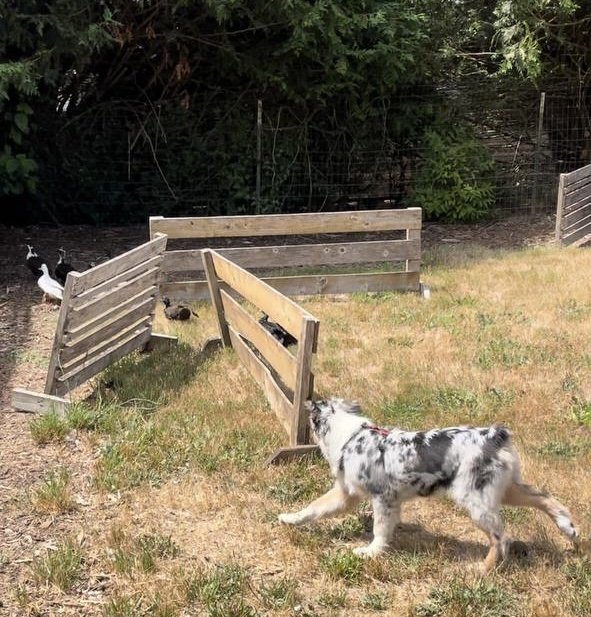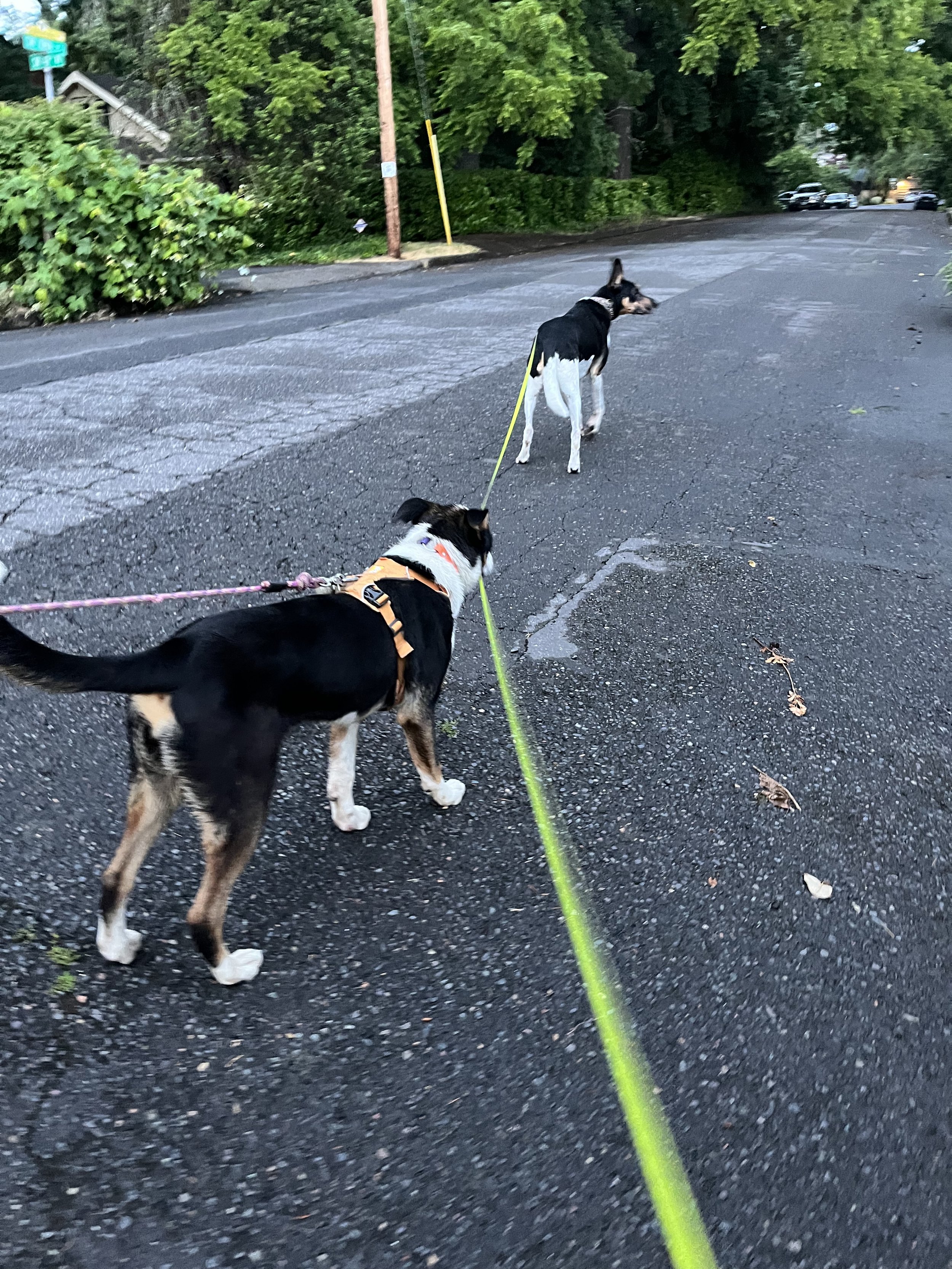Strider being silly and ferocious.
You’re on a walk with your dog and you see another dog coming your way, your heart rate quickens, you tighten up your leash to weather the storm of barking, lunging, screaming, rearing up on hind legs and yodeling, spinning, thrashing the leash, maybe turning and attacking you. Maybe you have been pulled over and dragged by your dog, maybe your dog has been in a fight. Sound familiar? You have what is commonly referred to as “a reactive dog.” You may even try things like: letting them say hi to the other dog so they stop barking, jerk on their leash to let them know you don’t approve of this display, chant leave it leave it leave it as you pass other dogs, pull out cookies and command a sit sit sit until the other dog passes, apologize to the human and seemingly perfect dog passing you and assure them that your dog is very friendly, stand in front of your dog’s view playing goalie and saying quiet! No! Leave it! But still this routine persists. It’s stressful, embarrassing, frustrating, and confusing. Why does your dog do this?
Time to call in a qualified behavior professional. This is not something your dog will grow out of. It will likely get more intense and show up in more places. If your current strategies have not improved the behavior, it’s time to pivot.
Mmm lick lick lick
The #1 client inquiry I receive is to address reactivity. We are seeing more reactive dogs because we are asking more of our dogs than ever in history, confining them more, and meeting their needs less. Reckless breeding of unstable dogs is at an all time high. Increased dogs spending their socialization period in the rescue system. Dogs used to be off leash and free roaming with little behavioral pressure and a lot of agency. Dogs spent most of their time outdoors. Dogs had jobs. Dogs were active all day and brought inside or on the porch to sleep at night. The majority of dogs on this planet right now are free roaming street dogs, living in human society very peacefully. It’s the captive pet dogs who are struggling. The best thing you can do for your dog is to pack up and buy acreage in the country and provide them the work their ancestors did.
Eno the Australian Shepherd pup learning to herd ducks.
The next best thing is to: fully stop exposing them to the situations in which they are reactive for 2 weeks minimum, maybe even a year. Identify the stressors in their lives and cut those out. Give your dog a stress free staycation. During this time provide increased enrichment and off leash hikes. Provide your dog breed specific outlets. Take a look at their diet. You may work with a trainer on remedial socialization depending on the root of your dog’s reactivity. Consult with your vet to rule out health concerns. You may benefit from talking to your vet about behavior meds. Begin training the skills you need to walk around the neighborhood harmoniously in your living room. Things like heel, go sniff marker cue, hand touch, auto eye contact, name response, cue response, pattern games, yield to leash pressure, following a lure, stationing, changing direction with you, self regulations exercises, fluent treat eating, ambling gait, and your leash and treat handling mechanics. Practice doggy body awareness and strength training exercises. Dogs who feel awkward in their bodies can feel unsafe in high pressure situations. Your dog is going to LOVE getting so much of your attention through training games, they won’t even miss their walks. Once these skills are fluent in your living room, train in another room of your house, then your yard or apartment hallway, then with a friend over, then at a sniff spot, build the strength of these skills in the presence of distractions. Work with your trainer to practice these skills in the presence of a calm dog outside of the range in which your dog is fixated on them. Weekly, reduce the distance of the other dog until you are as close as you need to be for a walk. Then try it with a more active dog, a big dog, a small dog, etc. Now you are ready to take your skills to the street, staying close to your home and keeping the walk short begin training sessions where you will see unplanned dogs. Expand as you have success.
Puppy Tilly biting old lady Dandi’s flexi leash. Both dogs needed support for Reactivity Reduction.
Now you have training games, enrichment, and hikes and breed specific outlets for your dog. Walks no longer have to be your dog's main source of exercise and enrichment. Add walks to the rotation of your dog’s daily activity.
Elva retrieving in the river.
This is how I address reactivity, other trainers will approach this differently. There are many proven ways to successfully help you and your dog with Reactivity Reduction. Before you work with a trainer, ask them what their process is. Ask lots of questions. Your trainer should be happy to explain their reasoning for their method.
Questions? Ask in the comments.
